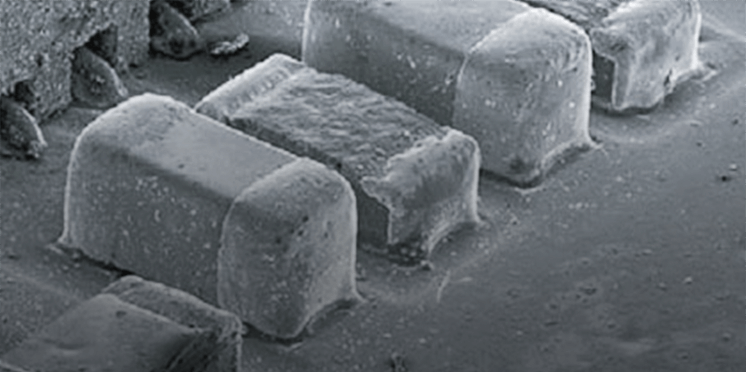シリコン・リチウム検出器
シリコン・リチウム検出器
Si(Li) detector
[目次:検出系]
エネルギー分散型X線検出器のひとつでEDSに用いられる。Liをドープしたシリコン単結晶半導体を検出素子として用いている。検出素子にX線が入射すると、そのエネルギーに比例した量の電子-正孔対 (生成エネルギーは~3 eV) が素子内部に発生する。この電子を外部から電圧をかけて素子底面のアノードに集め、電圧パルスとして取り出すことでX線エネルギーを計測する。検出可能元素はB (0.18keV @K線)~U (3.16keV @M線)。エネルギー分解能は~140 eV(@Mn K線)。ドープしたLiの拡散を防ぐため、また熱ノイズによる暗電流を少なくするため、液体窒素冷却を必要とする。最近は、計数率が高くペルチェ冷却で使用可能なSDDの登場により、使用されなくなりつつある。
One of the energy-dispersive X-ray detector used for EDS. A lithium (Li)-doped silicon single-crystal semiconductor is used as a detector element. When X-rays enter the detector element, electron-hole pairs (their generation energy is approximately 3 eV) are generated in the detector element, whose number is proportional to the energies of the X-rays. The generated electrons are collected to the anode at the bottom of the detector element by applying an external electric field. That is, the X-ray energies are measured as electric voltage pulses. Detectable elements range from boron (B: 0.18 keV @K line) to uranium (U: 3.16 keV @M line). The energy resolution of the detector is approximately 140 eV (@Mn K line). Cooling of the detector by liquid nitrogen is required to prevent diffusion of doped Li and to reduce a dark current caused by thermal noise. Owing to the development of a silicon drift detector (SDD) which has a high count rate and can be used by Peltier cooling, the Si(Li)detector has less been used.
関連用語から探す
説明に「シリコン・リチウム検出器」が含まれている用語






